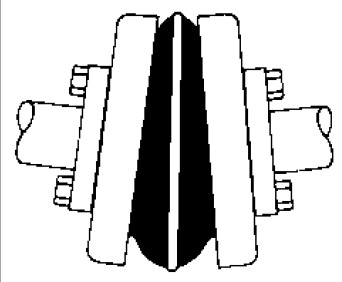Course of action
S-Flex Coupling Variety Method
The assortment approach for figuring out the right S-Flex coupling necessitates employing the charts proven around the following pages. There are 3 parts  to be chosen, two flanges and one sleeve.
to be chosen, two flanges and one sleeve.
Details essential prior to a coupling is often chosen:
HP and RPM of Driver or operating torque
Shaft size of Driver and Driven tools and corresponding keyways
Application or tools description
Environmental conditions (i.e. severe temperature, corrosive conditions, space limitations)
Steps In Choosing An S-Flex Coupling
Stage one: Determine the Nominal Torque in in-lb of your application by using the following formula:
Nominal Torque = (HP x 63025)/RPM
Stage 2: Applying the Application Service Element Chart one choose the service factor which ideal corresponds for your application.
Phase three: Determine the Design and style Torque of one’s application by multiplying the Nominal Torque calculated in Stage 1 from the Application Services Issue established in Phase two.
Design Torque = Nominal Torque x Application Services Aspect
Phase four: Working with the Sleeve Performance Information Chart two decide on the sleeve material which ideal corresponds for your application.
Stage 5: Applying the S-Flex Nominal Rated Torque Chart 3 locate the ideal sleeve material column for that sleeve chosen in Stage 4.
Stage six: Scan down this column on the first entry where the Torque Value during the column is higher than or equal to the Design Torque calculated in Step three.
Refer to your optimum RPM value from the coupling dimension to be sure that the application specifications are met. Should the optimum RPM value is much less than the application necessity, S-Flex couplings are not recommended for the application.
Note:
If Nominal Torque is less than 1/4 on the coupling’s nominalrated torque, misalignment capacities are diminished by 1/2. The moment torque value is found, refer on the corresponding coupling size in the first column of your S-Flex Nominal Rated Torque Data Chart three .
Stage 7: Review the application driver/driven shaft sizes to the optimum bore dimension available around the coupling selected. If coupling max bore is not really big adequate to the shaft diameter, select the following biggest coupling that will accommodate the driver/driven shaft diameters.
Stage 8: Employing the Item Assortment tables, locate the ideal Keyway and Bore size required and locate the number.
